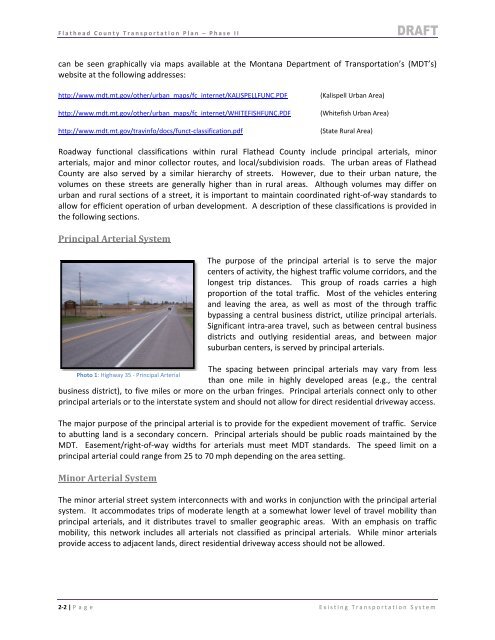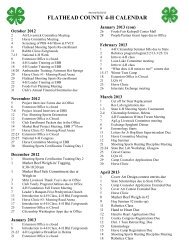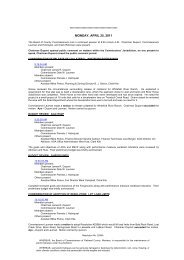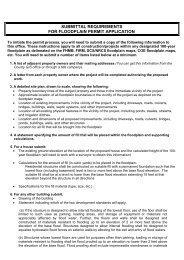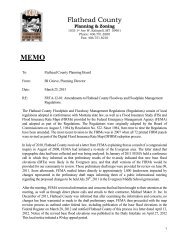Flathead County Transportation Plan – Phase II
Flathead County Transportation Plan – Phase II
Flathead County Transportation Plan – Phase II
You also want an ePaper? Increase the reach of your titles
YUMPU automatically turns print PDFs into web optimized ePapers that Google loves.
<strong>Flathead</strong> <strong>County</strong> <strong>Transportation</strong> <strong>Plan</strong> <strong>–</strong> <strong>Phase</strong> <strong>II</strong><br />
can be seen graphically via maps available at the Montana Department of <strong>Transportation</strong>’s (MDT’s)<br />
website at the following addresses:<br />
http://www.mdt.mt.gov/other/urban_maps/fc_internet/KALISPELLFUNC.PDF (Kalispell Urban Area)<br />
http://www.mdt.mt.gov/other/urban_maps/fc_internet/WHITEFISHFUNC.PDF (Whitefish Urban Area)<br />
http://www.mdt.mt.gov/travinfo/docs/funct‐classification.pdf (State Rural Area)<br />
Roadway functional classifications within rural <strong>Flathead</strong> <strong>County</strong> include principal arterials, minor<br />
arterials, major and minor collector routes, and local/subdivision roads. The urban areas of <strong>Flathead</strong><br />
<strong>County</strong> are also served by a similar hierarchy of streets. However, due to their urban nature, the<br />
volumes on these streets are generally higher than in rural areas. Although volumes may differ on<br />
urban and rural sections of a street, it is important to maintain coordinated right‐of‐way standards to<br />
allow for efficient operation of urban development. A description of these classifications is provided in<br />
the following sections.<br />
Principal Arterial System<br />
The purpose of the principal arterial is to serve the major<br />
centers of activity, the highest traffic volume corridors, and the<br />
longest trip distances. This group of roads carries a high<br />
proportion of the total traffic. Most of the vehicles entering<br />
and leaving the area, as well as most of the through traffic<br />
bypassing a central business district, utilize principal arterials.<br />
Significant intra‐area travel, such as between central business<br />
districts and outlying residential areas, and between major<br />
suburban centers, is served by principal arterials.<br />
The spacing between principal arterials may vary from less<br />
Photo 1: Highway 35 ‐ Principal Arterial<br />
than one mile in highly developed areas (e.g., the central<br />
business district), to five miles or more on the urban fringes. Principal arterials connect only to other<br />
principal arterials or to the interstate system and should not allow for direct residential driveway access.<br />
The major purpose of the principal arterial is to provide for the expedient movement of traffic. Service<br />
to abutting land is a secondary concern. Principal arterials should be public roads maintained by the<br />
MDT. Easement/right‐of‐way widths for arterials must meet MDT standards. The speed limit on a<br />
principal arterial could range from 25 to 70 mph depending on the area setting.<br />
Minor Arterial System<br />
The minor arterial street system interconnects with and works in conjunction with the principal arterial<br />
system. It accommodates trips of moderate length at a somewhat lower level of travel mobility than<br />
principal arterials, and it distributes travel to smaller geographic areas. With an emphasis on traffic<br />
mobility, this network includes all arterials not classified as principal arterials. While minor arterials<br />
provide access to adjacent lands, direct residential driveway access should not be allowed.<br />
2‐2 | P age Existing <strong>Transportation</strong> System


